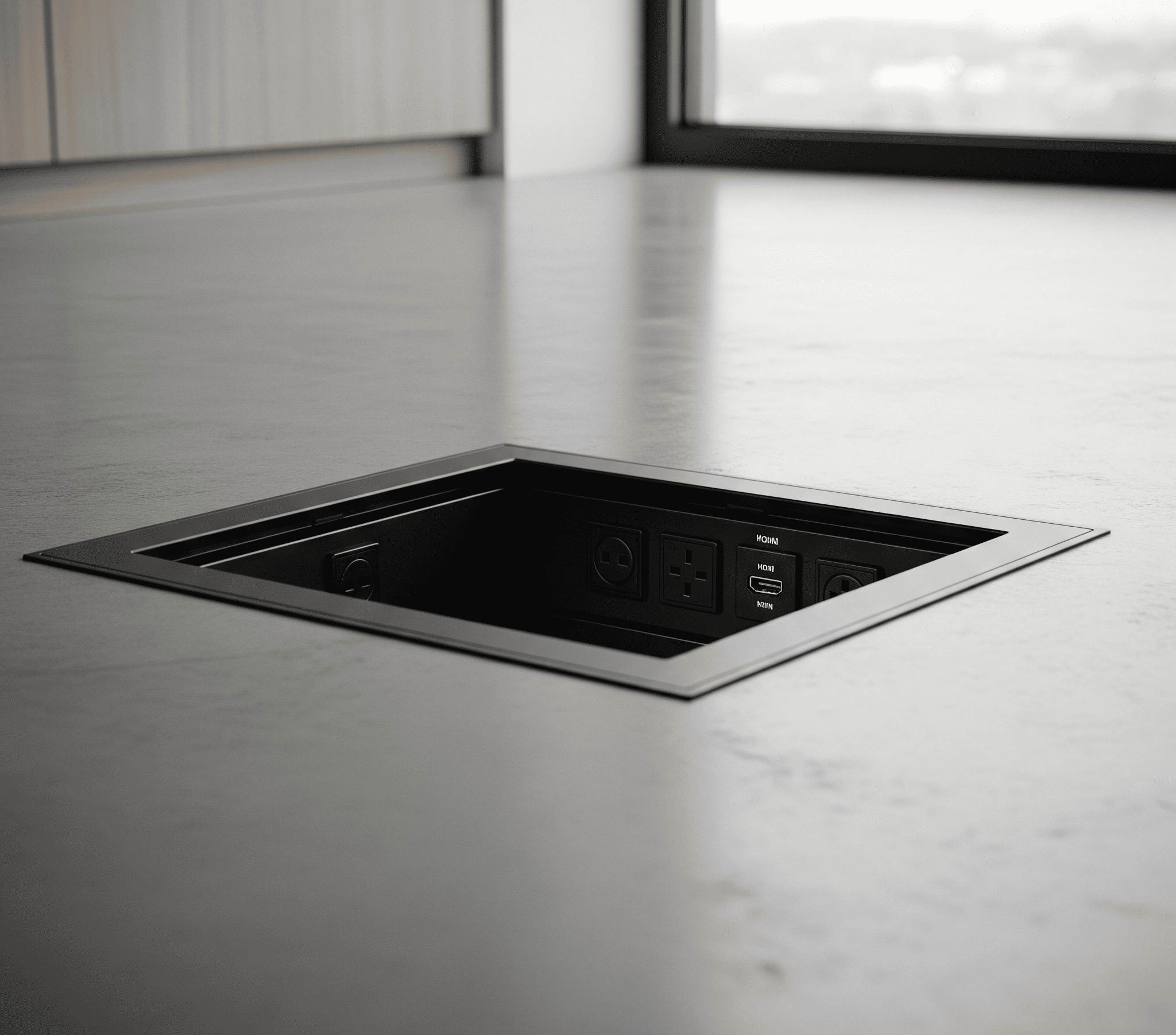Kingsgrove Branch:
Recessed Floor Box

Recessed floor box the unsung hero of clean, efficient installations. From managing cables in residential spaces to supporting complex systems in commercial environments, these discreet marvels are the backbone of modern infrastructure. This comprehensive guide delves into the intricacies of recessed floor boxes, covering everything from their design and installation to maintenance and future trends
Imagine a world where cables are hidden, installations are sleek, and functionality meets aesthetics. Recessed floor boxes make this vision a reality. We'll explore the various types, their applications, and the critical considerations for a successful installation
Recessed Floor Boxes: A Comprehensive Guide
Recessed floor boxes are a versatile solution for discreetly managing cables and wiring within floors. They're a common sight in both residential and commercial spaces, offering a clean and organized aesthetic. This guide delves into their design, installation, applications, and maintenance
Introduction to Recessed Floor Boxes
Recessed floor boxes are specifically designed to be integrated into the floor, concealing wiring and cables. Their key feature is their hidden nature, which contributes to a clean, uncluttered aesthetic. They're often employed in areas requiring a professional and modern look, such as homes, offices, and retail spaces. Various types exist, catering to different needs and applications
- Types of Recessed Floor Boxes: These are categorized by material (metal, plastic, composite), size (various dimensions to accommodate different cable needs), and function (e.g., for electrical outlets, data ports, or other specific needs)
- Historical Context: Early recessed floor boxes were often simpler, with metal being the dominant material. Modern iterations leverage advancements in materials and design for enhanced durability and aesthetic appeal
| Typical Dimensions (Approximate) | Material |
|---|---|
| 6" x 6" x 4" | Steel |
| 4" x 4" x 2" | Aluminum or composite |
| Variable, based on custom design | Steel or composite |
| Custom-designed | Various |
Installation and Design Considerations
Proper installation is crucial for both functionality and safety. The steps typically involve preparing the floor, precisely positioning the box, and securely fastening it in place. Electrical codes and safety regulations must be followed meticulously
- Installation Steps: The precise steps vary based on the type of floor and box, but typically involve marking the location, cutting out the recess, installing the box, and securing it. Thorough preparation is key
- Design Considerations: Factors like load capacity, electrical code compliance, and aesthetic integration with the surrounding space must be considered. Different types of floor boxes may have specific requirements for their installation
- Installation Methods: Methods for different box types might vary. Concrete floors require different techniques compared to wood or other materials. Choosing the correct approach is vital
- Materials: Materials like steel, aluminum, and composite materials are commonly used. Their properties, including corrosion resistance and weight, affect the suitability for specific environments
| Challenges | Example |
|---|---|
| Difficult cutting, potential for cracking | Installing a large data box |
| Wood damage, uneven surface | Installing a smaller combination box |
Functionality and Applications
Recessed floor boxes are adaptable to various applications. They're used to neatly manage cables in residential, commercial, and industrial settings, improving both functionality and aesthetics
- Diverse Applications: These boxes are used for everything from standard electrical outlets to complex data and security installations. The adaptability of recessed boxes is a significant advantage
- Specific Functionalities: Features like cable management and grounding help ensure safety and proper functionality. Careful design allows for seamless integration with existing electrical and data systems
- Comparison with Other Floor Boxes: Recessed floor boxes offer a superior aesthetic, but may require more specialized installation compared to surface-mounted options. The choice depends on the specific needs of the project
| Requirements | Example |
|---|---|
| Standard electrical code compliance | Adding outlets in a new house |
| High data transfer speed, reliable connectivity | Wiring a new office building |
Ending Remarks
In conclusion, recessed floor boxes offer a powerful solution for managing cables and creating a visually appealing and functional space. Whether you're a homeowner or a seasoned contractor, understanding the intricacies of these hidden gems empowers you to make informed decisions. Remember, careful planning, proper installation, and consistent maintenance are key to maximizing their lifespan and performance. See GPO floor box
Questions and Answers
What are the typical dimensions of a recessed floor box?
Dimensions vary significantly based on the specific type and application. Consult the product specifications for accurate measurements. A table within the main content provides a range of typical dimensions
What are the most common materials used in recessed floor box construction?
Common materials include steel, aluminum, and various plastics, each with its own set of properties. The table in the installation section details the properties and suitability for different environments
What safety precautions should I take when installing a recessed floor box?
Always prioritize safety. Follow all electrical codes and regulations. Ensure proper grounding and insulation, and disconnect power before starting any work. Refer to the safety section for a detailed overview
How often should I maintain a recessed floor box?
Regular inspections and cleaning are essential. The frequency depends on the environment and usage. Refer to the maintenance section for a detailed maintenance schedule
Recent posts

Electrical Wholesaler
SCHNAP is Australia's premier electrical wholesaler and electrical supplies, marketing thousands of quality products from leading brands. Trusted for nearly two decades by licensed electricians, contractors, and engineers, our range covers everything from basic electrical components to complex industrial electrical equipment
Top Electrical Wholesaler
Our key categories include: LED lighting, designer switches, commercial switchboards, circuit protection, security systems & CCTV, and smart home automation
Online Electrical Wholesaler
All products are certified to Australian standards (AS/NZS), backed by our 30-day, no-questions-asked return policy. Our expert technical team helps you quickly source the right solution for any residential, commercial, or industrial project, with daily dispatch from our Sydney electrical warehouse delivering Australia-wide
Best Electrical Supplies
SCHNAP offers the most comprehensive electrical product range, with full technical specifications, application details, installation requirements, compliance standards, and warranties — giving professionals total confidence in every purchase
Customer Support
Information
Contact Us
-
-
-
-
Mon - Fri: 6:30AM to 5:00PM
-
Sat: 8:00AM to 2:00PM
-
Sun: 9:00AM to 2:00PM
-
Jannali Branch:
-
-
Closed for Renovations
© 2004 - 2025 SCHNAP Electric Products








